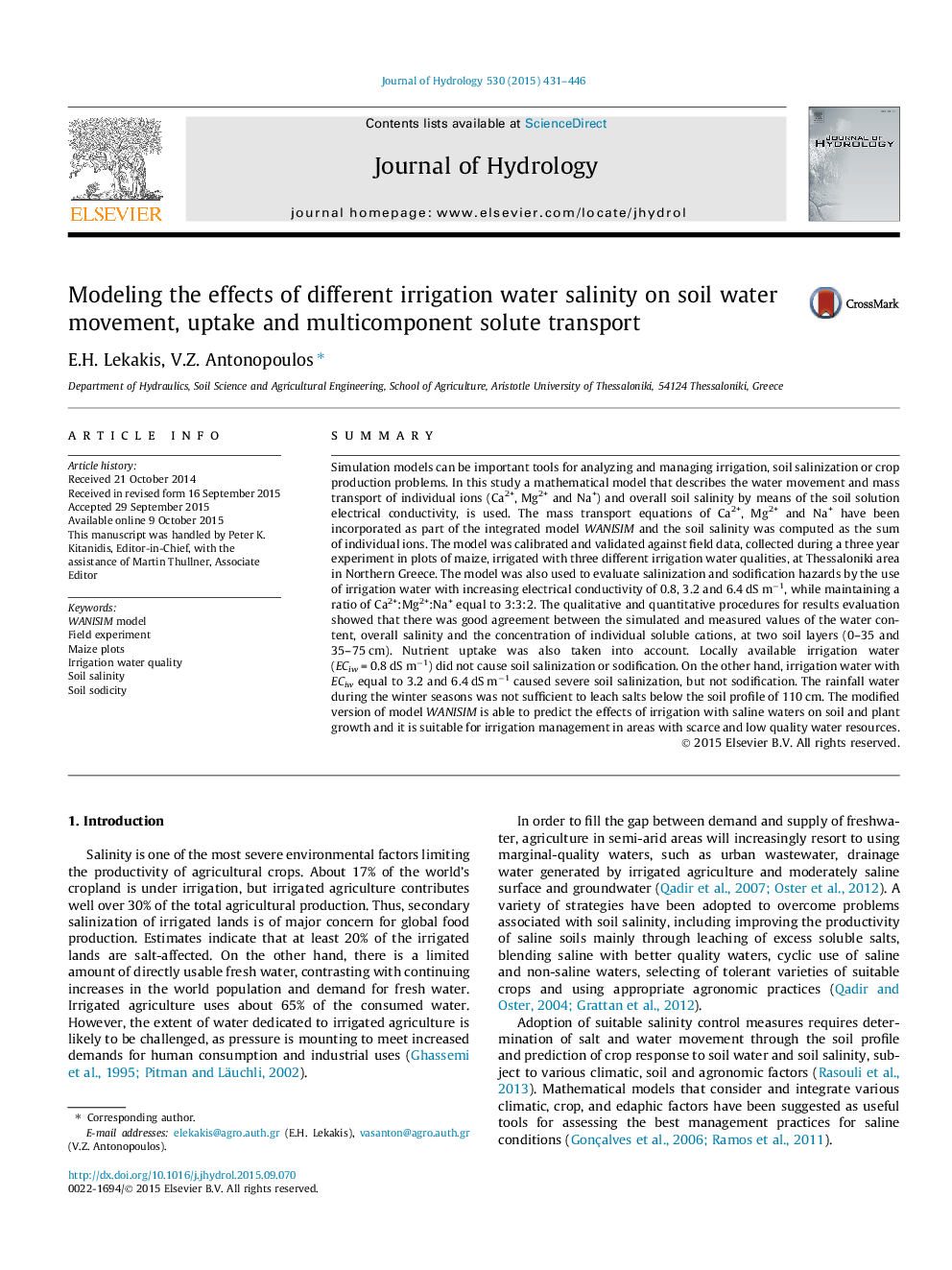| کد مقاله | کد نشریه | سال انتشار | مقاله انگلیسی | نسخه تمام متن |
|---|---|---|---|---|
| 6410218 | 1629921 | 2015 | 16 صفحه PDF | دانلود رایگان |
- Model WANISIM was modified for salinity management.
- Soil salinity was described by a medium structure model.
- fSP ratio takes into account the effects of soil moisture on plant salt tolerance.
- The model was calibrated and validated against experimental field data.
- Prediction of soil moisture, salinity, major cations and plant uptake was successful.
SummarySimulation models can be important tools for analyzing and managing irrigation, soil salinization or crop production problems. In this study a mathematical model that describes the water movement and mass transport of individual ions (Ca2+, Mg2+ and Na+) and overall soil salinity by means of the soil solution electrical conductivity, is used. The mass transport equations of Ca2+, Mg2+ and Na+ have been incorporated as part of the integrated model WANISIM and the soil salinity was computed as the sum of individual ions. The model was calibrated and validated against field data, collected during a three year experiment in plots of maize, irrigated with three different irrigation water qualities, at Thessaloniki area in Northern Greece. The model was also used to evaluate salinization and sodification hazards by the use of irrigation water with increasing electrical conductivity of 0.8, 3.2 and 6.4 dS mâ1, while maintaining a ratio of Ca2+:Mg2+:Na+ equal to 3:3:2. The qualitative and quantitative procedures for results evaluation showed that there was good agreement between the simulated and measured values of the water content, overall salinity and the concentration of individual soluble cations, at two soil layers (0-35 and 35-75 cm). Nutrient uptake was also taken into account. Locally available irrigation water (ECiw = 0.8 dS mâ1) did not cause soil salinization or sodification. On the other hand, irrigation water with ECiw equal to 3.2 and 6.4 dS mâ1 caused severe soil salinization, but not sodification. The rainfall water during the winter seasons was not sufficient to leach salts below the soil profile of 110 cm. The modified version of model WANISIM is able to predict the effects of irrigation with saline waters on soil and plant growth and it is suitable for irrigation management in areas with scarce and low quality water resources.
Journal: Journal of Hydrology - Volume 530, November 2015, Pages 431-446
